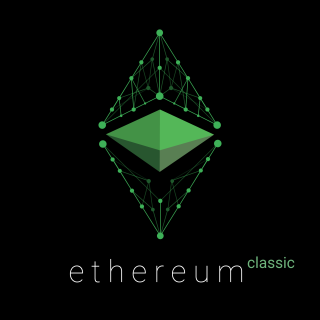Related Research Articles
A fundamental problem in distributed computing and multi-agent systems is to achieve overall system reliability in the presence of a number of faulty processes. This often requires coordinating processes to reach consensus, or agree on some data value that is needed during computation. Example applications of consensus include agreeing on what transactions to commit to a database in which order, state machine replication, and atomic broadcasts. Real-world applications often requiring consensus include cloud computing, clock synchronization, PageRank, opinion formation, smart power grids, state estimation, control of UAVs, load balancing, blockchain, and others.
A smart contract is a computer program or a transaction protocol that is intended to automatically execute, control or document events and actions according to the terms of a contract or an agreement. The objectives of smart contracts are the reduction of need for trusted intermediators, arbitration costs, and fraud losses, as well as the reduction of malicious and accidental exceptions. Smart contracts are commonly associated with cryptocurrencies, and the smart contracts introduced by Ethereum are generally considered a fundamental building block for decentralized finance (DeFi) and non-fungible token (NFT) applications.
Double-spending is the unauthorized production and spending of money, either digital or conventional. It represents a monetary design problem: a good money is verifiably scarce, and where a unit of value can be spent more than once, the monetary property of scarcity is challenged. As with counterfeit money, such double-spending leads to inflation by creating a new amount of copied currency that did not previously exist. Like all increasingly abundant resources, this devalues the currency relative to other monetary units or goods and diminishes user trust as well as the circulation and retention of the currency.
Proof-of-stake (PoS) protocols are a class of consensus mechanisms for blockchains that work by selecting validators in proportion to their quantity of holdings in the associated cryptocurrency. This is done to avoid the computational cost of proof-of-work (POW) schemes. The first functioning use of PoS for cryptocurrency was Peercoin in 2012, although the scheme, on the surface, still resembled a POW.

Ethereum is a decentralized blockchain with smart contract functionality. Ether is the native cryptocurrency of the platform. Among cryptocurrencies, ether is second only to bitcoin in market capitalization. It is open-source software.

Stellar, or Stellar Lumens, is an open-source, decentralized protocol for digital currency to fiat money low-cost transfers which allows cross-border transactions between any pair of currencies. The Stellar protocol is supported by a Delaware nonprofit corporation, the Stellar Development Foundation, though this organization does not enjoy 501(c)(3) tax-exempt status with the IRS.
A blockchain is a distributed ledger with growing lists of records (blocks) that are securely linked together via cryptographic hashes. Each block contains a cryptographic hash of the previous block, a timestamp, and transaction data. Since each block contains information about the previous block, they effectively form a chain, with each additional block linking to the ones before it. Consequently, blockchain transactions are irreversible in that, once they are recorded, the data in any given block cannot be altered retroactively without altering all subsequent blocks.
Monero is a cryptocurrency which uses a blockchain with privacy-enhancing technologies to obfuscate transactions to achieve anonymity and fungibility. Observers cannot decipher addresses trading Monero, transaction amounts, address balances, or transaction histories.
Hyperledger is an umbrella project of open source blockchains and related tools that the Linux Foundation started in December 2015. IBM, Intel, and SAP Ariba have contributed to support the collaborative development of blockchain-based distributed ledgers. It was renamed the Hyperledger Foundation in October 2021.
Consensys is a private blockchain software technology company founded by Joseph Lubin and based in Fort Worth.
A decentralised application is an application that can operate autonomously, typically through the use of smart contracts, that run on a decentralized computing, blockchain or other distributed ledger system. Like traditional applications, DApps provide some function or utility to its users. However, unlike traditional applications, DApps operate without human intervention and are not owned by any one entity, rather DApps distribute tokens that represent ownership. These tokens are distributed according to a programmed algorithm to the users of the system, diluting ownership and control of the DApp. Without any one entity controlling the system, the application is therefore decentralised.
A distributed ledger is a system whereby replicated, shared, and synchronized digital data is geographically spread (distributed) across many sites, countries, or institutions. In contrast to a centralized database, a distributed ledger does not require a central administrator, and consequently does not have a single (central) point-of-failure.

Ethereum Classic is a blockchain-based distributed computing platform that offers smart contract (scripting) functionality. It is open source and supports a modified version of Nakamoto consensus via transaction-based state transitions executed on a public Ethereum Virtual Machine (EVM).

IOTA is an open-source distributed ledger and cryptocurrency designed for the Internet of things (IoT). It uses a directed acyclic graph to store transactions on its ledger, motivated by a potentially higher scalability over blockchain based distributed ledgers. IOTA does not use miners to validate transactions, instead, nodes that issue a new transaction on the network must approve two previous transactions. Transactions can therefore be issued without fees, facilitating microtransactions. The network currently achieves consensus through a coordinator node, operated by the IOTA Foundation. As the coordinator is a single point of failure, the network is currently centralized.
A blockchain is a shared database that records transactions between two parties in an immutable ledger. Blockchain documents and confirms pseudonymous ownership of all transactions in a verifiable and sustainable way. After a transaction is validated and cryptographically verified by other participants or nodes in the network, it is made into a "block" on the blockchain. A block contains information about the time the transaction occurred, previous transactions, and details about the transaction. Once recorded as a block, transactions are ordered chronologically and cannot be altered. This technology rose to popularity after the creation of Bitcoin, the first application of blockchain technology, which has since catalyzed other cryptocurrencies and applications.
Nano is a cryptocurrency characterized by a directed acyclic graph data structure and distributed ledger, making it possible for Nano to work without intermediaries. To agree on what transactions to commit, it uses a voting system with weight based on the amount of currency an account holds.
Algorand is a proof-of-stake blockchain and cryptocurrency. Algorand's native cryptocurrency is called ALGO.
Colored Coins is an open-source protocol that allows users to represent and manipulate immutable digital resources on top of Bitcoin transactions. They are a class of methods for representing and maintaining real-world assets on the Bitcoin blockchain, which may be used to establish asset ownership. Colored coins are bitcoins with a mark on them that specifies what they may be used for. Colored coins are also considered the initial step toward NFTs built on top of the Bitcoin network.

Andrew Jonathan Masanto is an entrepreneur. He co-founded two of the top 100 cryptocurrencies, Hedera Hashgraph in 2017 and Reserve in 2019. He and his brother Christopher Masanto also co-founded Pet Lab Co, a fast growing pet company in the United States in 2021.
References
- ↑ ".NET Client Library for Hedera Hashgraph". GitHub . 18 August 2022.
- ↑ Tapscott, Don; Tapscott, Alex (2016). Blockchain Revolution: How the Technology Behind Bitcoin Is Changing Money, Business, and the World. Penguin. ISBN 9781101980156.
- ↑ Treiblmaier, Horst; Beck, Roman (2018). Business Transformation through Blockchain, Volume 2. Cham: Palgrave Macmillan. p. 98. ISBN 9783319990576.
- ↑ "Virtual Voting". Hedera Documentation. Retrieved 25 April 2024.
- ↑ "Can hashgraph succeed blockchain as the technology of choice for cryptocurrencies?", The Hindu , 25 March 2018
- ↑ "Hashgraph wants to give you the benefits of blockchain without the limitations", TechCrunch , 14 March 2018
- ↑ Panetto, Herve; Debruyne, Christophe; Proper, Henderik; Ardagna, Claudio; Roman, Dumitro; Meersman, Robert (2018). On the Move to Meaningful Internet Systems. OTM 2018 Conferences: Confederated International Conferences: CoopIS, C&TC, and ODBASE 2018, Valletta, Malta, October 22-26, 2018, Proceedings, Part 2. Cham: Springer. p. 281. ISBN 9783030026707.
- ↑ Baird, Leemon; Harmon, Mance; Madsen, Paul (13 August 2019). "Hedera: A Public Hashgraph Network & Governing Council" (PDF). Hedera (version 1.5 ed.). Archived from the original (PDF) on 11 November 2020. Retrieved 23 April 2024.
- 1 2 "How Hedera Hashgraph is building a fast and secure blockchain alternative", VentureBeat , 4 August 2018, retrieved 20 March 2021
- ↑ "Hedera's Journey". Hedera. Retrieved 31 January 2024.
- ↑ "Hedera Governing Council Votes to Purchase Hashgraph IP,…". Hedera. 19 January 2022.
- ↑ "Hedera Governing Council". Hedera Hashgraph. Retrieved 31 May 2021.
- ↑ "Introducing Hiero: Bringing Hedera's Core Network Software to Linux Foundation Decentralized Trust". www.lfdecentralizedtrust.org. 16 September 2024. Retrieved 2 October 2024.
- ↑ "Can hashgraph unseat blockchain as the favoured tech for cryptocurrencies?", Live Mint , 20 March 2018
- ↑ "Next-Generation Crypto-Ledgers Take the Block Out of Blockchain". Bloomberg . Retrieved 24 February 2018.
- ↑ "Hedera Hashgraph Thinks It Can One-Up Bitcoin And Ethereum With Faster Transactions", Forbes , 13 March 2018
- ↑ "Cooper Kunz tweet", Twitter, 14 August 2019